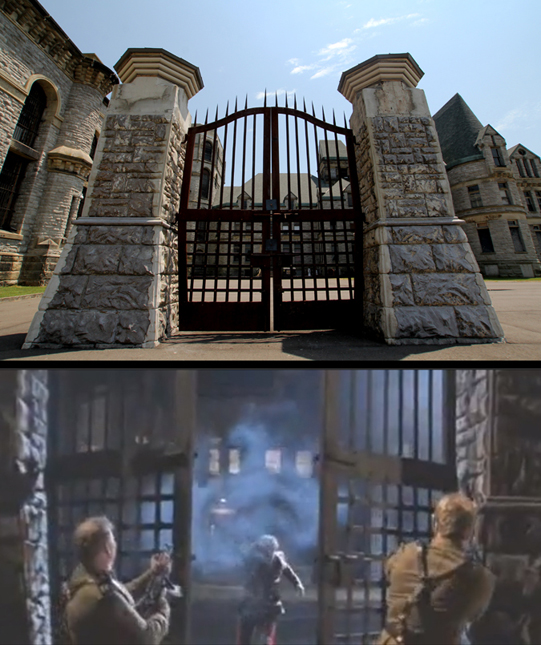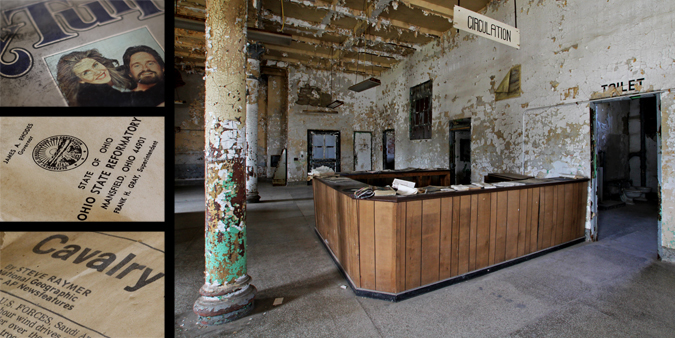The Ohio State Reformatory
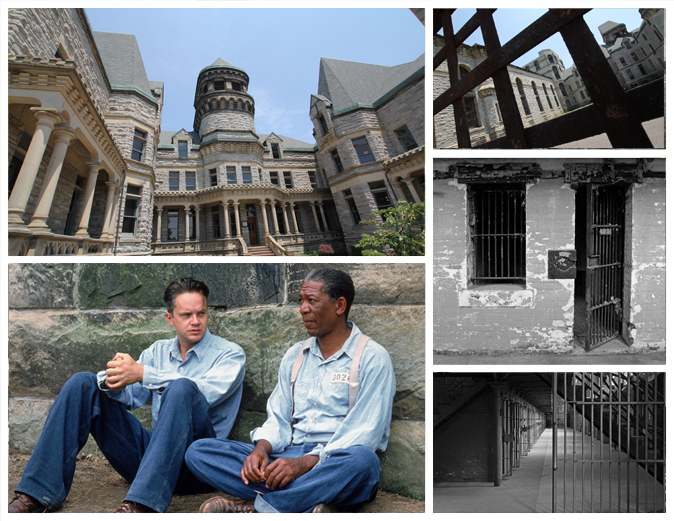
"Andy came to Shawshank Prison in early 1947 for murdering his wife and the fella she was bangin'." That quote is one of many from the 1994 film "The Shawshank Redemption," a film that helped keep the former Ohio State Reformatory in Mansfield, Ohio from being completely demolished. Opened in 1896, the Romanesque architecture was an imposing site in the field that housed the intermediate state penitentiary. It remained in operation until 1990 and today is open to the public for tours, one of which I attended that provided access to areas usually off limits. While featured in many films and other media, the prison was also no stranger to violence and death. You might even recognize some of the people who did time here.
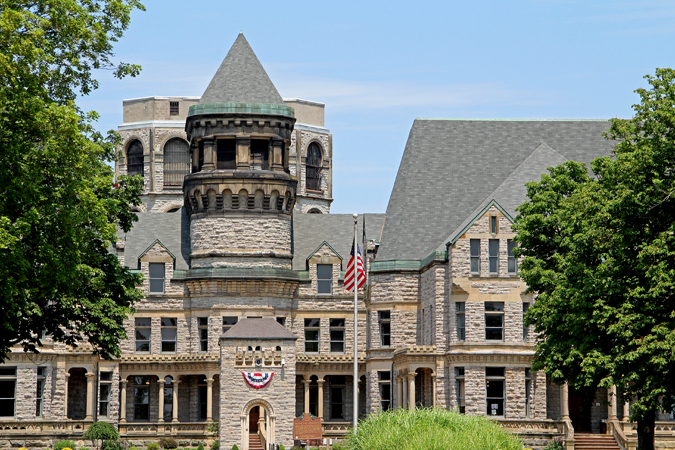 |
| - Entrance to the former Ohio State Reformatory in Mansfield, Ohio. |
In 1861, a lonely field in Mansfield, Ohio was used as a Civil War training camp. By 1888 that field was the construction site for what would be the state of Ohio's newest intermediate penitentiary. Cleveland architect Levi T. Scofield was the man behind the design, hoping the rural prison grounds and Romanesque architecture would provide inspiration to the men sealed behind his building's walls. The first inmates arrived in 1896 from the state penitentiary in Columbus. Those 150 men were immediately put to work and tasked with building the prison's walls and sewer system. Construction of the entire complex was finally completed in 1910.
 |
| - Aerial view of the Ohio State Reformatory when the entire complex was still standing. Image credit: Mansfield Reformatory Preservation Society |
For the next eighty years, OSR would house mostly first time offenders who had hopes of being rehabilitated and deterred from a life of crime. There was no execution chamber or long term sentencing. By the 1950's, conditions in the prison began to worsen due to overcrowding. A riot broke out in 1957. The cells went from single occupancy to double occupancy and near the end of the building's life as a prison, some cells were being used to house as many as four prisoners. The conditions were so bad that the American Civil Liberties Union filed a lawsuit on behalf of the inmates. A judge ordered the closing of the prison and by December 1990, the last of the prisoners had been moved to the new Mansfield Correction Institution just outside the OSR walls.
The prison then sat unused and abandoned for awhile, slated for demolition. What kept the wrecking balls at bay though, were plans for a movie called The Shawshank Redemption, based off the Stephen King novel of a similar title. Location scouts for the film had been made aware of the reformatory and plans were set in motion to begin filming in Mansfield. The wrecking balls were put on hold and the film crews arrived in the summer of 1993.
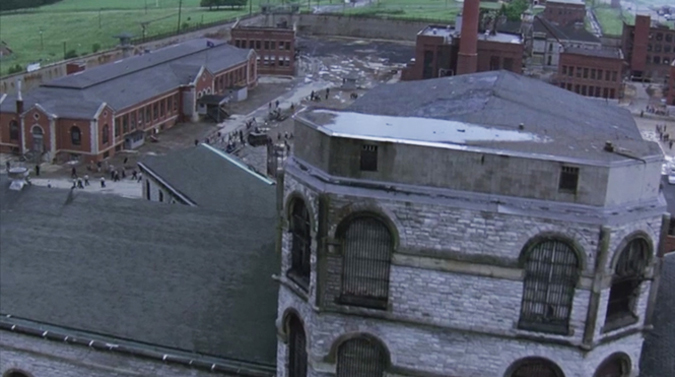 |
| - Overview of the reformatory as seen in a scene from The Shawshank Redemption (1994). |
Starring Tim Robbins and Morgan Freeman, the entire film was shot primarily at the former prison and surrounding area. Despite being overshadowed by Forest Gump, which also debuted in 1994 and won most of the Academy Awards that Shawshank was nominated for, the film has had its popularity grown via repeated showings on cable television. Even film critic Roger Ebert placed it on his list of all time greats.
Shawshank wasn't the first major motion picture to be filmed within the prison walls and it wouldn't be the last. 1976's Harry and Walter go to New York, a comedy about two con-men (James Caan and Eliot Gould), and 1989's Tango And Cash, an action movie about two cops portrayed by Sylvester Stallone and Kurt Russel, were both filmed at the prison while it was still in operation. In 1996, scenes for Air Force One starring Harrison Ford were filmed there.
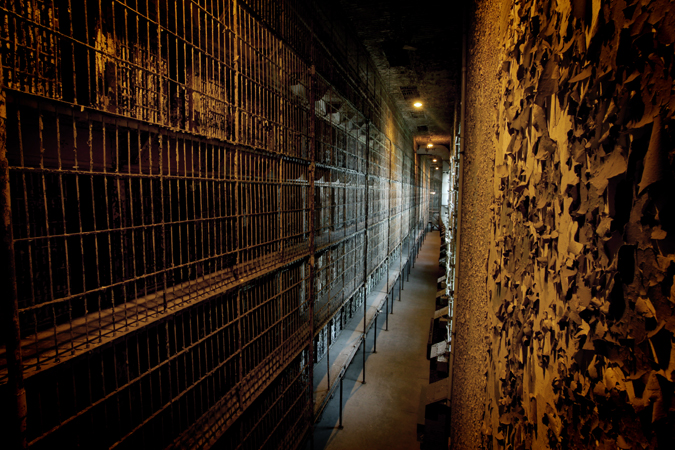 |
| - One of the reformatory's six tiered cell blocks, the tallest freestanding cell block in the world. |
After the filming wrapped for Shawshank, much of the prison was demolished. The building's two main cell blocks (six tiers high and the tallest freestanding cell blocks in the world today) and its center administration core were spared. The Mansfield Reformatory Preservation Society was formed in 1995 and operates tours and events in the prison still to this day.
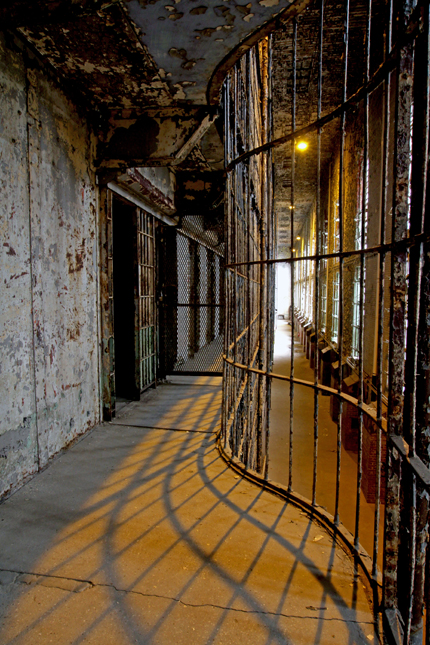
I was lucky enough to attend a tour specifically for photographers that had been organized by Sherman Cahal of Abandoned Online. The tour provided exclusive access to areas that were usually off limits and allowed us to roam freely about the building before the scheduled tour groups arrived.
My dad and I had driven by the building the night before, on our way up from Cincinnati. It had rained most of that evening and a thick fog had settled over the field where the former prison sat. It certainly was a creepy site to behold. The next morning as we drove to the prison from our hotel, a light rain and gray skies welcomed us as we came down the main road to the building's entrance. I can't imagine what it must've felt like driving up to this building as a prisoner, but Mansfield doesn't take prisoners anymore (unless you manage to lock yourself in a cell), on that day it was only admitting photographers.
We got our instructions from the tour guides, signed liability waivers and were set free to roam the prison's halls. While I hadn't been here before, a lot of it was familiar as I had seen The Shawshank Redemption many times before.
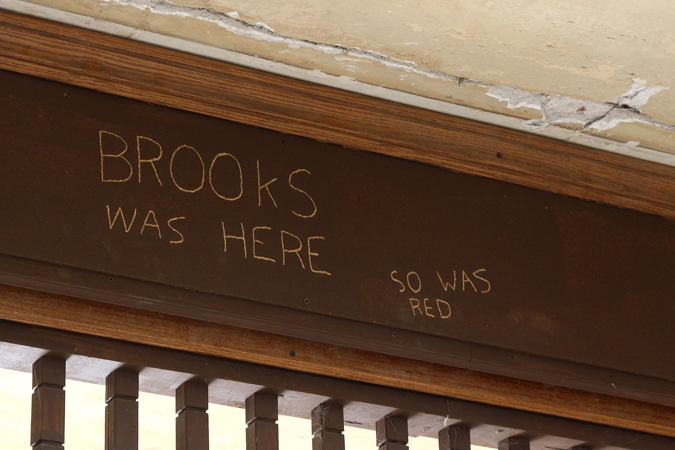 |
| - The name carvings in an apartment by two of the films characters upon their release from prison was actually filmed within the prison. |
One of the movie's more memorable scenes is when "Brooks" and Morgan Freeman's character, "Red," carve their names into the wall of their apartment upon being released on parole. The "apartment" was actually once an office in the prison that was mocked up for the film.
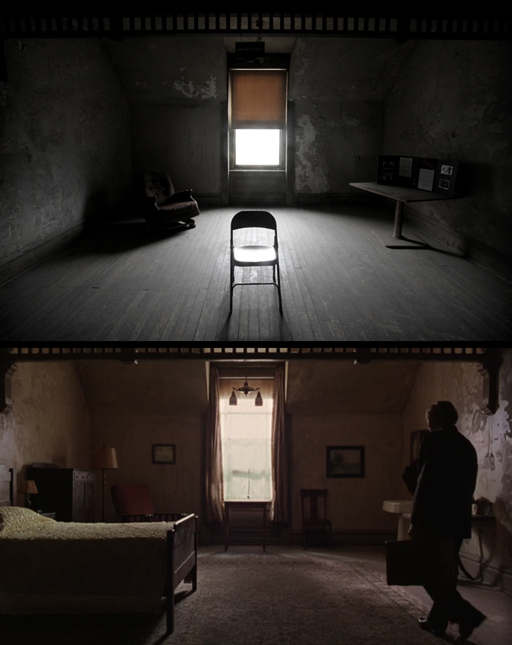 |
| - Top Image: A few props from Shawshank remain in a prison office that doubled as an apartment building. Bottom Image: The same room as seen in the film. |
Other notable locations within the prison as seen in the film:
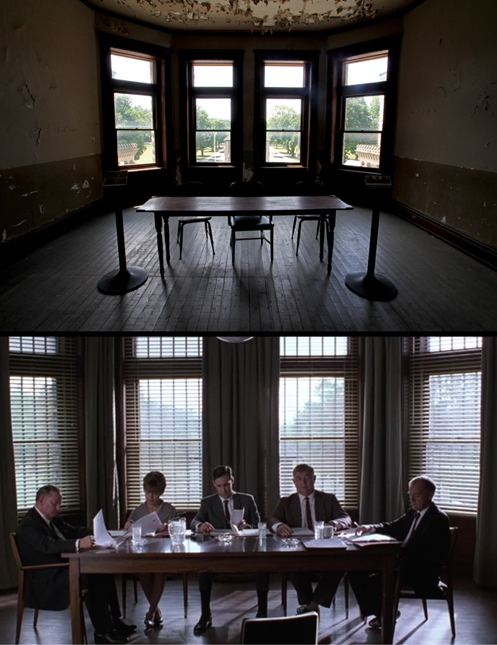 |
| - Top Image: The room used for the parole board hearing scenes as it appears today. Bottom Image: A still from the film showing the same room. |
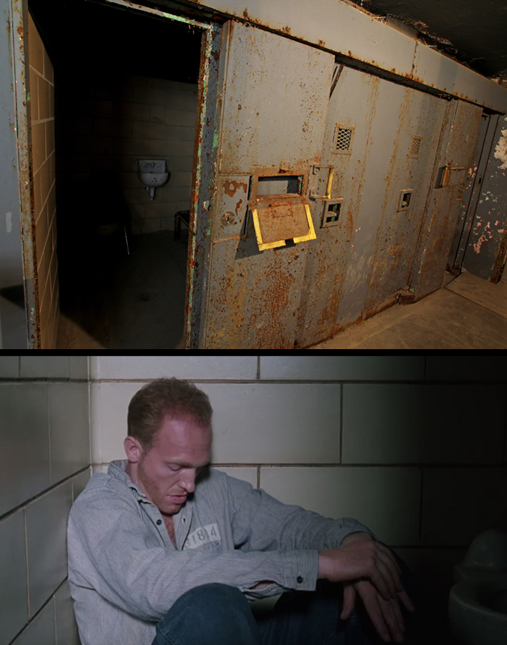 |
| - Top Image: A solitary confinement cell in the prison's basement floors. Bottom Image: A scene from The Shawshank Redemption showing a prisoner in "the hole." |
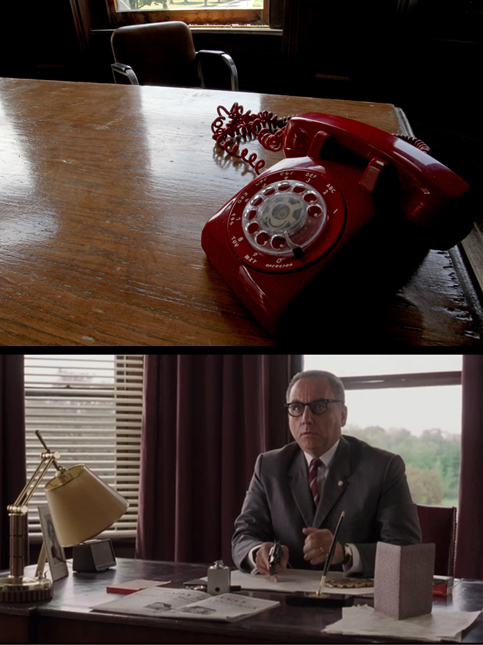 |
| - Top Image: The room used for the warden's office in The Shawshank Redemption. Bottom Image: The warden's office in the film. |
If you haven't seen it, Shawshank is an incredible film that depicts the story of a man sentenced to two life sentences at a New England prison in 1947 for murdering his wife and her lover. While not as highly acclaimed, Air Force One stars Harrison Ford and is a good example of a cheesy mid 90's patriotic action flick. While Ford never filmed any scenes at Mansfield, the prison was used as a stand in for the Russian gulag that houses one of the movie's villains.
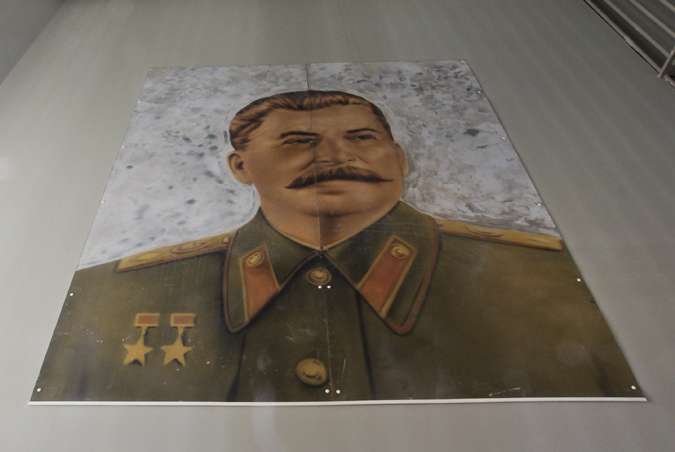 |
| - This portrait of Joseph Stalin can be seen in the background of the prison scenes in Air Force One. |
I haven't seen "Harry and Walter" or "Tango and Cash," although one looks goods and one looks like your run of the mill Stallone movie. In addition to four major motion pictures, a number of independent films and music videos have been shot at OSR. If you can tolerate the "music," the videos for Godsmack's "Awake" and Lil Wayne's "Go DJ" were both shot at the prison (listen at your own risk).
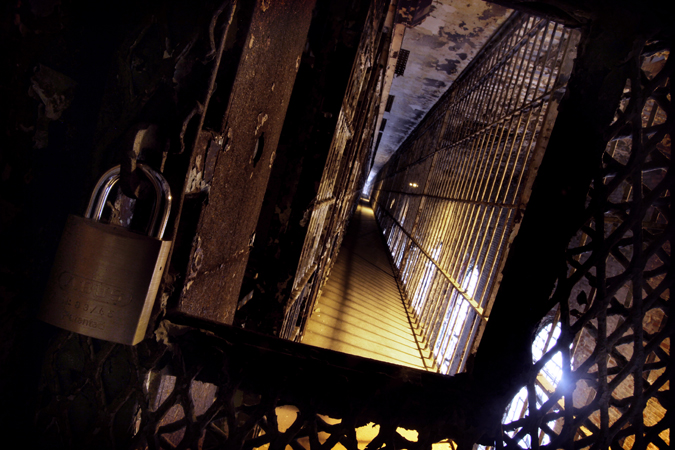 |
| - A row of cells blocked off from the tour. |
Actors and musicians weren't the only big names to visit Mansfield. Two pro athletes once did time inside the prison. Kevin Mack, a running back for the Cleveland Browns from 1985 - 1993, served one month at OSR in 1989 for drug possession charges. Gates Brown of the Detroit Tigers, who played from 1963-1975 and is recognized as one of baseball's greatest pinch hitters, served time for burglary at OSR in the late 50's. Encouraged to play on the prison's baseball team by a guard, Brown's coach eventually took notice and wrote to ball clubs who were interested in Brown's hitting ability. The Tigers helped get Brown paroled a year early in order to get him into their minor league system.
 |
| - Kevin Mack and Gates Brown, two famous athletes who did time at the reformatory. |
Despite not being the location of the more "hardened" and serious criminals who could be found at the state pen in Columbus and eventually Lucasville, violence and bloodshed did find their way to Mansfield.
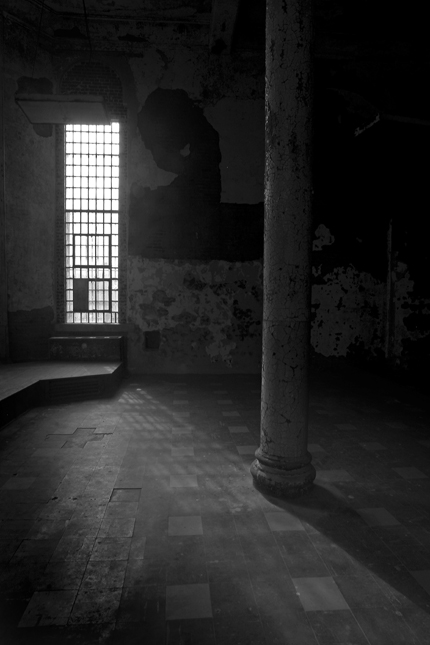 |
| - The prison's chapel. |
Two guards were murdered by inmates in 1926 and 1932 respectively. In 1948, prisoners John West and Robert Daniels were released on good behavior. They killed a bar owner in Columbus before heading to Mansfield where they took the prison's farm supervisor and his family hostage. The duo murdered John Niebel, his wife and daughter as an act of revenge against Niebel. Their spree would include two more random killings before police stopped them at a road block in Van Wert, near the Indiana border. West died in the shootout, but an injured Daniels was captured and then sent to fry in the Columbus electric chair.
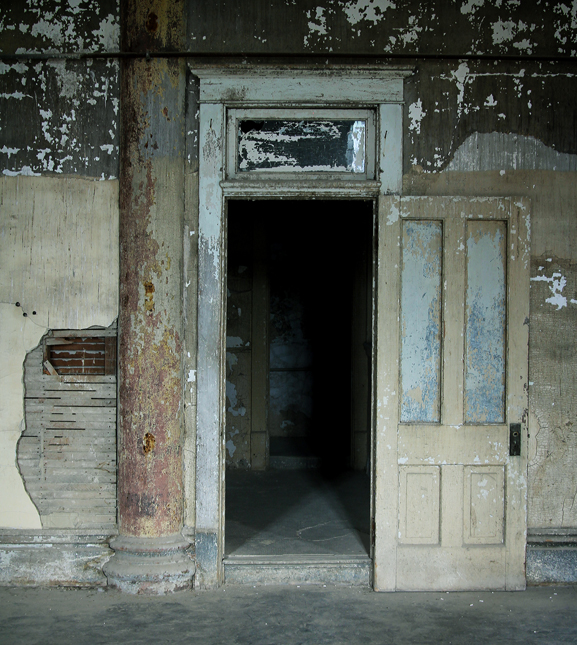 |
| - Cell in the prison's infirmary. |
One of OSR's keys was its focus on reformation. Inmates were taught trades in hopes that they would turn their lives around. Many on the outside though disagreed with using prisoners as free labor and by 1927, all 50 of the United States had stopped penal labor programs.
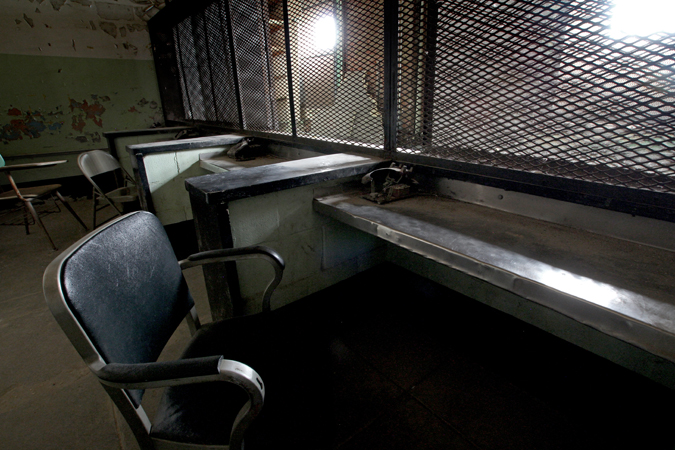
The Federal Government re-instituted penal labor programs in 1934 as a way of quelling unrest amongst prisoners and the practice still continues to this today, although heavily regulated and watched. Despite providing jobs that kept the prison self operating and allowed inmates to be leased to companies, Mansfield began to deteriorate. Ohio's entire prison system was becoming rapidly overcrowded. OSR soon began to accomodate more serious criminals with longer sentences that were being crammed into an already crowded situation.
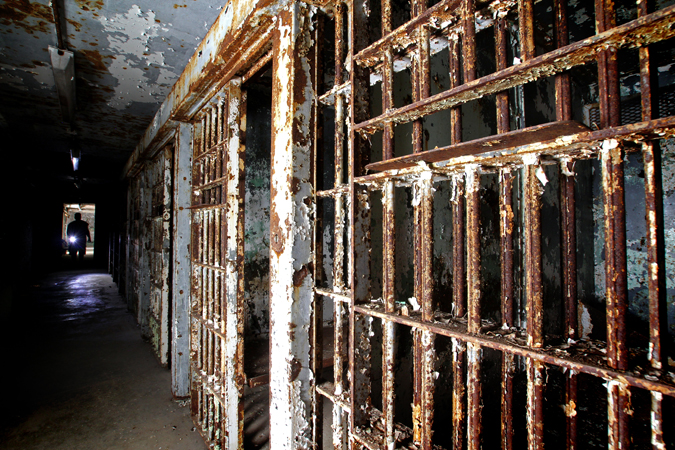 |
| - A row of cells in the basement solitary confinement block. |
While the cell blocks haven't been used for the past twenty two years, scenes from the aforementioned films show how deteriorated and run down the prison had become. The Boyd Consent Decree that ordered the prison's closing cited "inhumane conditions."
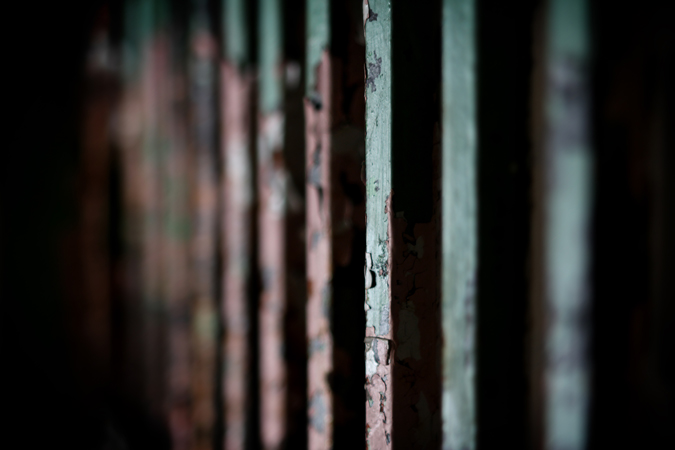 |
| - Detail of the peeling paint on a cell's bars. |
These days, sections of the building have been renovated to host events. A museum and gift shop feature relics of the past and props from the film and television shows filmed there. The Mansfield Reformatory Preservation Society operates numerous events and tours in the facility throughout the year to help raise money for preserving the historic structure.
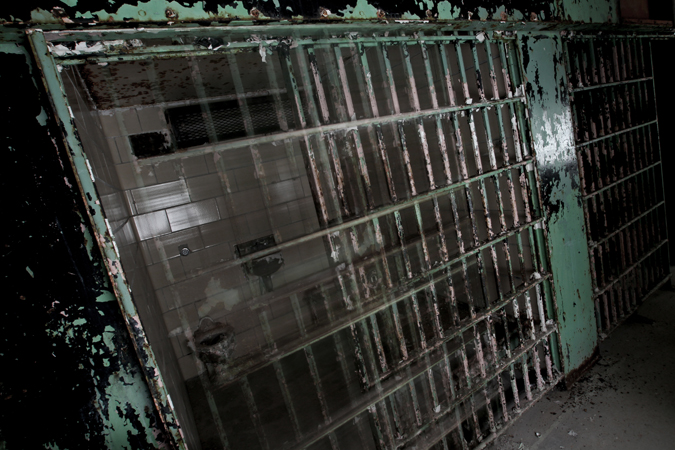
One of the preservation societie's more famous events are their "ghost hunts" and "ghost tours," where participants are permitted to tour the facility and seek out paranormal phenomena. The prison has been featured on numerous "ghost hunting" shows, although it should be noted that such shows are often staged and exaggerated in a manner to make them more exciting for television.
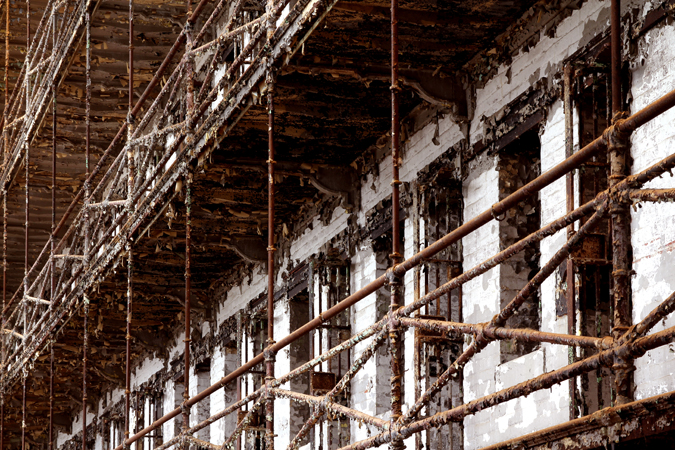
Personally, I don't believe in ghosts (and if you think the "ghost hunters" on tv are really doing something in front of the camera, you're an idiot). For me, the thrill of touring OSR is seeing what an incredible piece of history it is and imagining what it must've been like to be incarcerated there. Throughout the building, video kiosks show short clips about the prison's history, a few of them even feature real inmates who served time there. The thought of being locked up in a cramped cell at a place where violence and crime are the norm is more frightening to me than ghost stories ever could be.
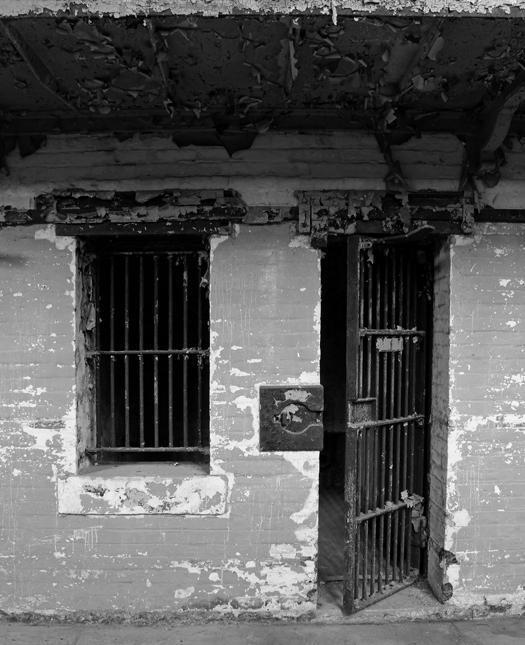
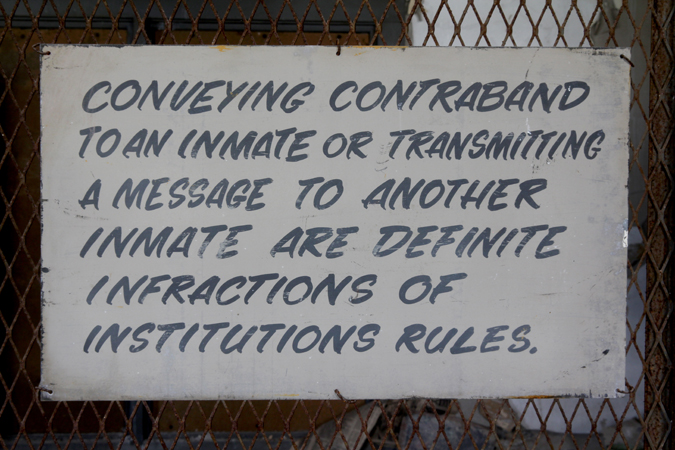

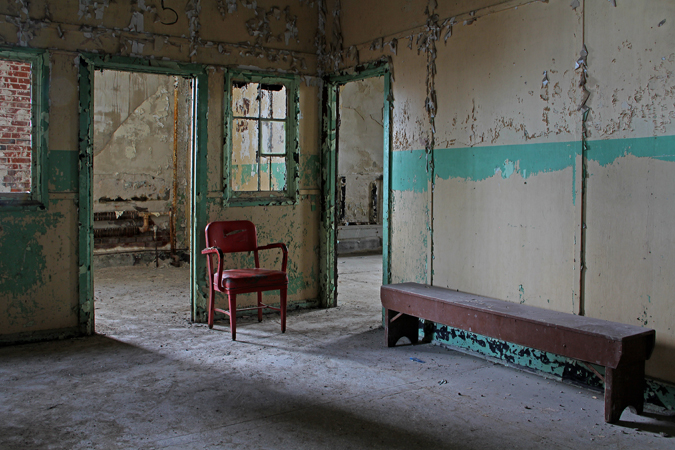 |
| - The prison's infirmary. |
 |
| - Lettering that once marked the legal service's section of the prison's library. |
"These prison walls are funny. First you hate 'em, then you get used to 'em. Enough time passes, gets so you depend on them. That's institutionalized. They send you here for life, that's exactly what they take. The part that counts anyways"
- Ellis Boyd "Red" Redding as played by Morgan Freeman in The Shawshank Redemption.
"Get off my plane!"
- President James Marshall as played by Harrison Ford in Air Force One.
Couldn't decide which quote was better to end the article with.
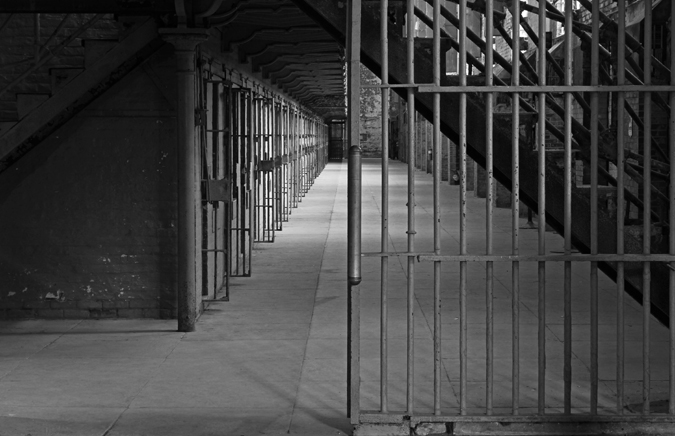
*If anyone personally knows or knows of a way to contact a former inmate of the prison, I would love to conduct an interview for a followup article. Please feel free to email here.
Thanks to MRPS for providing the tour, Sherman Cahal for organizing it and my Dad for coming along!
For information on tours and preservation efforts, check out the Mansfield Reformatory Preservation Society.
